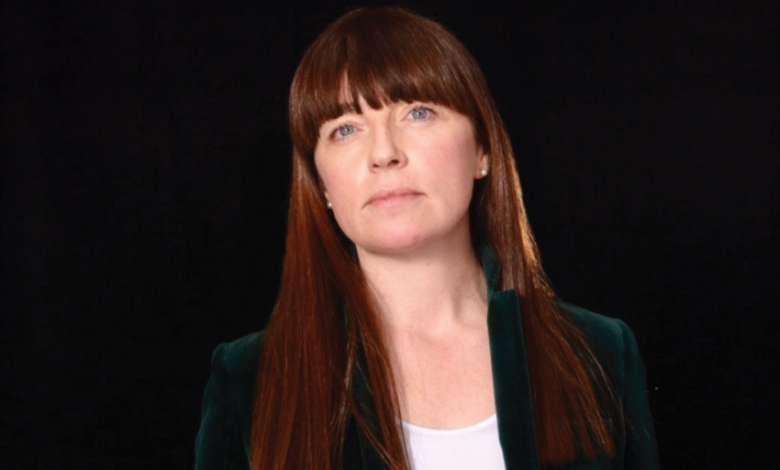TRADE UNION DESK Why we pay Child Benefit to all families

The new Taoiseach’s priority to tackle child poverty alongside a double Child Benefit payment to ease the cost of living for families has reopened a regular debate on whether we are wasting public money on wealthy parents, writes Laura Bambrick, Head of Social Policy and Employment Affairs at the Irish Congress of Trade Unions (ICTU).
Child Benefit is a cash payment from the State to families with children under age 16, or under 18 if in full-time education or training. It is worth €140 a month tax-free for each child, with a higher rate paid for twins and other multiple births.
Unlike other social welfare payments, Child Benefit is not means tested. You do not have to show your household income is below a certain threshold to qualify. Nor is it contributory. You do not need a history of paying social insurance while in employment to get it.
It is paid for all children regardless of the size or source of their parents’ income, excluding asylum seekers and persons seeking leave to remain in the State.
Child Benefit is one of the largest expenditures from the Department of Social Protection annual budget. In 2020, €2.1 billion was paid to 630,000 families for 1.2 million children. Why and how such a large sum is spent is open to regular criticism.
“The recent Commission on Taxation and Welfare does not recommend Ireland follows the UK example. It recommends that Child Benefit should remain tax-free and paid for every child.”
Some argue that the public purse should not be part-funding people’s choice to have a child. More often, others argue that, rather than scrapping it completely, Child Benefit should be taxed or only paid to low-income families to better target available resources at children at risk of poverty.
These arguments surfaced again when the payment rate was doubled for November 2022, as a once-off measure to assist young families with the surge in the cost of living.
Why not target to needy families?
Child Benefit is one of our longest running social welfare payments. It was first introduced in 1944 and was originally only paid to fathers with three or more children under age 16 as an anti-poverty measure for large families.
This made Ireland unusual among European countries who had also introduced children’s allowances but with the purpose of encouraging couples to have larger families to replace the population lost in the two world wars.
Nearly a century on, Child Benefit continues to be used by governments throughout Europe to contribute towards the cost of raising a child and to invest in future generations who will in turn provide the pensions for today’s workers.
Child Benefit is a particularly important policy instrument in Ireland given that our income tax code no longer has a child tax credit for parents. Likewise, the vast majority of working families are not entitled to the other means tested income supports and public services.
It was not until 1973 that the payment was made payable to Irish mothers. At the time few married women had an independent income. Greater awareness of wives and children being financially neglected by their husbands shifted public attitudes to accepting the long-held European view of Child Benefit as a housewife’s wage.
Along with the huge cost and administrative burden involved in means testing over 600,000 families, within-household poverty remains a key reason for retaining Child Benefit as a universal payment. That is, while there may be a high earner in a household, we cannot assume that the income is adequately shared. But ultimately Child Benefit is a payment from the State for the child not for the child’s parents.
Where next for Child Benefit?
In 2013, the UK Government started to tax Child Benefit and ceased payments for the children of high earners. For each £100 that a parent earns over £50,000, 1 per cent of the total Child Benefit received must be repaid in tax. Therefore, if a parent earns £60,000 or more the full amount is clawed back.
The savings from this reform have not been distributed to children in poorer families. Child Benefit has increased by a mere £6.50 to £94 a month for the firstborn and to £63 for any additional children and, when adjusted for rising prices, is now worth less than it was in 1999.
The recent Commission on Taxation and Welfare does not recommend Ireland follows the UK example. It recommends that Child Benefit should remain tax-free and paid for every child. It does however recommend one reform – a top-up to the standard €140 monthly payment for children in low-income families.
This new means-tested second tier Child Benefit would replace the current child increase paid to parents receiving a weekly social welfare payment, such as Jobseeker’s Allowance or One Parent Family Payment, to remove disincentives to work and reduce the poverty risk for low-paid working families.
For the few parents who occasionally pop up in the media declaring that they neither want nor to need the money, it is worth remembering that Child Benefit is an opt-in payment. You do not automatically receive it – you have to apply, and you can opt-out at any time by contacting the Department of Social Protection to close your claim.





